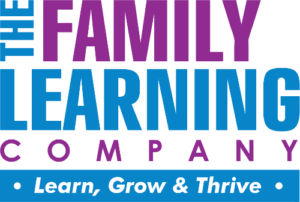The Science of Reading and Interactive Family Literacy

Research in the Science of Reading (SoR) identifies five essential components for children and adults to learn to read with fluency and comprehension. {Snow, C.E., Burns, M.S., and Griffin, P. (Eds.). (1998). Preventing reading difficulties in young children. Washington, D.C.: National Academy Press.] Interactive Family Literacy is built to develop all five:
- Phonemic Awareness,
- Decoding,
- Vocabulary,
- Fluency, and
- Comprehension.
In addition, Interactive Family Literacy incorporates the vital sixth component of literacy: Writing.
Phonemic Awareness
English has 254 letter-sound combinations making it hard to learn to read using common alphabetic approaches. However, the language has only 44 sounds or phonemes, meaning that sound-to-letter, or phonological awareness, approaches are much more effective. Interactive Family Literacy starts with Phonemic Awareness activities to introduce the sounds, segueing to Phonological Awareness activities to ensure that all learners enter decoding with full phonemic and phonological awareness.
Decoding
Learners must learn to sound out, or decode, new words in order to be able to acquire new reading vocabulary. [Joseph K. Torgesen. (2005) Preventing Early Reading Failure.] The Orton-Gillingham method is the gold standard for decoding skill acquisition because it provides direct, explicit, systematic multi-sensory lessons that build on sound-symbol relationships. Interactive Family Literacy has over 200 effective Orton-Gillingham-based decoding activities, plus decodable text e-books that start early readers on the road to decoding.
Vocabulary
Building vocabulary requires learning the sub-components, pronunciations and meanings of words. Interactive Family Literacy provides over 2,000 vocabulary activities for over 4,000 included words. The program includes an average of six different vocabulary activities for each word list to accommodate different learning preferences and to provide engaging variety.
Fluency
Fluency is the ability to read text with appropriate speed, accuracy and expression for a given reading level. Interactive Family Literacy provides hundreds of e-books at various age-interest levels and reading levels and a peer-guided fluency practice method proven in the field.
Comprehension
Comprehension is, of course, the goal of reading. Interactive Family Literacy provides hundreds of comprehension practice activities that implement the framework Strategies That Work [Harvey, S., & Goudvis, A. (2000). Strategies that work: Teaching comprehension to enhance understanding. York, ME: Stenhouse.] : making connections, visualizing, inferring, determining importance, and synthesizing.
Writing
Literacy includes both reading and writing. Many people learn reading through writing, and visa-versa. Interactive Family Literacy includes an expository writing activity for every included reading, and a separate section of over 100 narrative writing activities including writing mechanics to help readers master grade-level writing skills.
